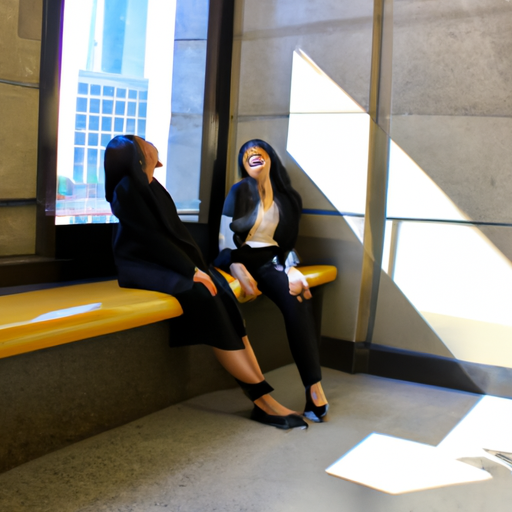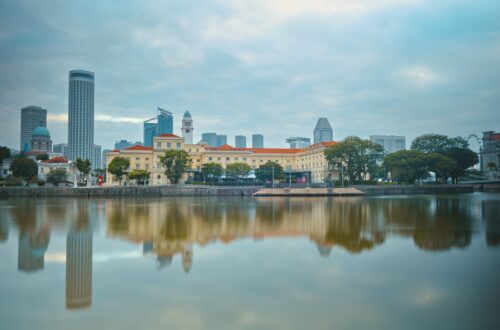
How Do I Handle Cultural Etiquette For Photography Or Taking Pictures In Public Places?
Imagine you’re strolling through a bustling market in a foreign country, camera in hand, eager to capture the vibrant scenes unfolding around you. But before you start clicking away, have you ever paused to consider the cultural etiquette of photography in public places? In this article, we will explore some essential tips and guidelines to navigate this delicate balance between capturing memorable moments and respecting the customs and privacy of the locals. By understanding the cultural nuances, you can create a harmonious connection with the people and places you encounter, resulting in truly breathtaking photographs.

Understanding Cultural Etiquette
Respecting Cultural Norms and Values
When it comes to photography and taking pictures in public places, one of the most important considerations is to respect the cultural norms and values of the community you are visiting. Different cultures have different expectations and beliefs surrounding photography, so it’s crucial to be mindful of these differences and act accordingly. What might be acceptable in one culture could be seen as disrespectful or invasive in another.
Researching the Cultural Etiquette in Advance
Before embarking on a photography trip to a particular destination, it is essential to conduct thorough research on the cultural etiquette of that place. Familiarize yourself with the local customs, traditions, and beliefs regarding photography. This will allow you to approach your photographic experiences with a deeper understanding and a greater respect for the local culture. By being well-prepared and informed, you can minimize the risk of unintentionally causing offense or misunderstanding.
Seeking Permission and Building Relationships
In many cultures, seeking permission before taking someone’s photograph is considered a sign of respect and courtesy. Building relationships and establishing a sense of trust with the people you wish to photograph can go a long way in capturing genuine and meaningful images. Engage in conversations, learn about the lives and stories of the individuals you meet, and seek their consent before taking their picture. This simple act not only shows respect for their privacy but also allows for a more personal and authentic connection.
Know the Legal Restrictions
Understanding the Laws and Regulations
In addition to cultural considerations, it is also crucial to familiarize yourself with the legal restrictions surrounding photography in any given location. Different countries and even regions within countries may have specific laws and regulations regarding the capture and use of images. Some places may require permits for commercial photography, while others may have restrictions on certain subjects or locations. By understanding the legalities, you can ensure that you are within the boundaries of the law while pursuing your passion.
Obtaining the Necessary Permits and Releases
If you plan on photographing in public places for commercial purposes or in locations where permits are required, it is essential to obtain the necessary permissions and releases. This will not only protect you from legal trouble but also ensure that you respect the rights and interests of the individuals and communities you are photographing. By working within the legal framework, you can maintain a positive and ethical approach to your photography practice.
Respecting Personal Boundaries
Maintaining Respect and Privacy
Respecting personal boundaries is crucial when capturing images of individuals in public places. While public spaces may be open and accessible, it is important to remember that everyone has a right to privacy. Avoid intruding on personal space or making individuals feel uncomfortable. Be aware of your surroundings, and if someone indicates their preference to not be photographed, respect their wishes.
Avoiding Intrusiveness
Intrusiveness can often be unintentional, but it is essential to be mindful of your actions and how they may be perceived by others. Avoid unnecessarily encroaching on people’s personal space or invading their privacy. If you wish to capture candid shots of people going about their daily lives, try to remain unobtrusive and blend into the surroundings as much as possible. This will allow you to document real moments without interfering with the natural flow of events.
Being Sensitive to Vulnerable Groups
When photographing individuals who may be part of vulnerable groups, such as children, the elderly, or individuals with disabilities, it is vital to exercise extra sensitivity and discretion. These individuals may require additional care and consideration, and it is crucial to prioritize their well-being and dignity above capturing the perfect shot. Always seek consent from a parent or guardian when photographing children and be mindful of any potential risks or harm that could arise from your actions.
Adapting to Non-Verbal Communication
Understanding Body Language and Gestures
Non-verbal communication plays a significant role in human interactions, and it varies across cultures. Different gestures, facial expressions, and body language can convey diverse meanings and intentions. When photographing in a different cultural context, take the time to observe and understand the non-verbal cues and mannerisms of the people around you. This will not only help you communicate effectively but also enable you to capture more authentic and genuine images that reflect the local culture accurately.
Recognizing Non-Verbal Cues of Discomfort
While photographing people, it is crucial to be attentive to non-verbal cues that indicate discomfort or unwillingness to be photographed. Some common signs include avoiding eye contact, tense body language, or individuals turning away from the camera. If you notice any of these signs, immediately stop taking photos and respect the person’s boundaries. It is essential to prioritize the comfort and well-being of the individuals you are photographing, rather than relentlessly pursuing the perfect shot.

Avoiding Offensive Subject Matter
Understanding Taboos and Cultural Sensitivities
Every culture has its own set of taboos and sensitivities regarding certain subjects. These may include religious symbols, sacred sites, sensitive events, or even specific clothing choices. It is crucial to educate yourself about these cultural sensitivities before embarking on your photographic journey. By understanding and respecting these taboos, you can avoid inadvertently causing offense or disrespecting the local culture.
Avoiding Photography of Sacred or Sensitive Places
Certain locations hold immense religious, historical, or cultural significance, and it is essential to approach them with due respect. In many instances, taking photographs of sacred or sensitive places may be strictly forbidden. Before photographing such sites, research their cultural or religious significance and follow any guidelines or restrictions that may be in place. Remember, the purpose of your photography should never outweigh the respect owed to the culture and heritage of a place.
Being Mindful of Dress Codes
In some cultures, certain dress codes are considered appropriate and respectful, while others may be seen as offensive or inappropriate. When visiting a foreign country, be aware of the dress expectations, particularly in more conservative regions. Dress modestly and considerately, and respect any guidelines or customs that may be in place. By adapting your attire to align with local norms, you demonstrate your respect for the culture and the people within it.
Photographing People
Respecting Consent and Privacy
When photographing individuals, regardless of the cultural context, obtaining consent is essential. Always respect people’s right to privacy and seek their permission before taking their photograph. This applies whether you are capturing candid street photography or engaging in more formal portrait sessions. By asking for consent, you create a respectful and inclusive space where individuals feel valued and involved in the photographic process.
Asking Permission Before Taking Photos
A simple act of asking for permission can go a long way in building connections and fostering understanding. Approach people with courtesy and explain your intentions. Use non-invasive language, a friendly tone, and be prepared to accept their decision, whether it is a yes or a no. By engaging with the people you encounter in a considerate and respectful manner, you create opportunities for meaningful and authentic photography.
Engaging in Positive and Respectful Interactions
Beyond obtaining permission, it is essential to engage with the individuals you photograph in a positive and respectful manner. Create a comfortable atmosphere, establish rapport, and take the time to conversate and learn about their lives. By showing genuine interest and respect, you can capture more authentic and compelling images that reflect the true essence of the people and their culture.

Photographing Religious and Cultural Events
Understanding the Significance and Practices
Religious and cultural events are often deeply rooted in traditions, beliefs, and rituals. Before photographing such events, take the time to understand their significance and importance within the community. Study the practices, customs, and any rules that may govern photography during these events. This knowledge will enable you to approach the event with sensitivity, capturing its essence while respecting the cultural and religious aspects associated with it.
Obtaining the Necessary Approvals
Certain religious and cultural events may require specific approvals or permissions to photograph. This could include seeking consent from event organizers, religious leaders, or local authorities. Take the time to research and understand the requirements, ensuring that you comply with any guidelines or restrictions in place. By obtaining the necessary approvals, you contribute to the preservation and respect of these valued traditions.
Participating with Sensitivity and Respect
Being an active participant in religious and cultural events can provide a unique insight into the community and facilitate a deeper understanding of its practices. However, it is crucial to participate with sensitivity and respect. Follow any rules or customs associated with the event, dress appropriately, and engage in the activities with reverence and genuine enthusiasm. By demonstrating your respect and appreciation, you can capture compelling images while honoring the sanctity of the event.
Ethics and Editing
Maintaining Trust and Integrity
Maintaining trust and integrity in photography is paramount, particularly when documenting different cultures. The images you capture should accurately represent the reality and context of the situation, without exaggeration or manipulation. It is essential to be honest and transparent in your work, ensuring that the visual narratives you create are authentic and truthful. By upholding these principles, you contribute to the preservation of trust between photographers and the communities they photograph.
Avoiding Manipulation or Distortion of Cultural Representations
Photographs have immense power in shaping perceptions and understanding. As a photographer, it is crucial to refrain from manipulating or distorting the visual representation of different cultures. Avoid applying stereotypical filters or emphasizing certain aspects that may reinforce biases or misconceptions. Instead, strive to portray diverse cultures with fairness and accuracy, celebrating their uniqueness and promoting cultural understanding.
Seeking Permission for Publishing and Sharing
When you capture images of individuals or communities, it is crucial to seek their permission before publishing or sharing those photographs in any form. Respect the rights and interests of the people you photograph and ensure their consent is obtained. This includes obtaining consent for online platforms, social media sharing, or any other public display. By seeking permission, you demonstrate your commitment to ethical photography practices and acknowledge the dignity and autonomy of your subjects.

Educating Yourself on Local Customs
Being Aware of Local Sensitivities and Customs
Developing cultural awareness is key to successfully navigating cultural photography. Take the time to educate yourself about the local sensitivities, customs, and traditions of the community you are visiting. Learn about their history, social norms, and any prevalent cultural practices. This knowledge will help you approach your photography with sensitivity, respect, and an understanding of the values and beliefs held dear by the local population.
Learning Basic Phrases and Greetings
Another way to show respect and connect with the local community is by learning some basic phrases and greetings in the local language. Even a simple “hello” or “thank you” in the local tongue can go a long way in establishing rapport and creating a positive interaction. This effort demonstrates your willingness to engage with the culture and shows that you value the people and their customs.
Handling Challenging Situations
Respecting the Wishes of Individuals or Groups
In some situations, individuals or communities may express a desire not to be photographed. It is essential to respect their wishes and prioritize their comfort and privacy above any desire to capture an image. Communication and understanding are key in these circumstances. Listen to their concerns, engage in respectful dialogue, and respond with empathy. By adapting to their requests, you foster trust and demonstrate your commitment to responsible and considerate photography practices.
Addressing Conflict Appropriately
Occasionally, cultural and ethical dilemmas may arise during photographic encounters. It’s crucial to handle these situations with sensitivity and respect. Engage in open and honest communication, seeking to understand the concerns and perspectives of all parties involved. Approach any conflict or disagreement with calmness and a willingness to find a mutually agreeable resolution. By addressing conflicts appropriately, you foster understanding and promote positive relations between photographers and the communities they document.
Respecting the Decision to Not Be Photographed
Not everyone may feel comfortable or willing to be photographed, and it is crucial to respect their decision. Regardless of the reasons underlying their choice, show understanding and acceptance. Remember that the dignity and autonomy of individuals should always take precedence over any photography ambitions. By respecting their decision, you contribute to creating a culture of trust and respect in the photographic community.
Photography is a powerful medium that allows us to capture and preserve moments, people, and cultures. By approaching cultural etiquette with respect, empathy, and a willingness to understand, you can create not only beautiful images but also build bridges of understanding between cultures. Embrace the diversity of our world, learn from the people you photograph, and cherish the privilege of sharing their stories through your lens.




